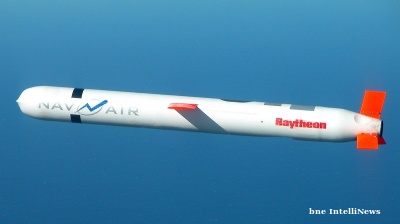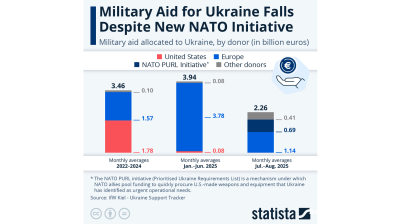INTERVIEW: Ukraine to continue expanding cargo transport from Odesa ports despite Russian bombardment

The ports of Greater Odesa have come under intense bombardment from Russian missiles in recent weeks, yet they remain in operation, and the Ukrainian Sea Ports Authority (USPA) plans to continue opening them up to an increasing range of cargoes, the deputy head of USPA, Dmitry Barinov, said in an interview with bne IntelliNews.
The Odesa region has three ports – Odesa, Chornomorsk and Pivdennyi – collectively referred to as Greater Odesa. The ports of Greater Odesa play a crucial role in supporting Ukraine's economy by enabling exports to world markets, but also in maintaining global food security, according to Barinov.
Speaking to bne IntelliNews, Barinov highlighted the ports’ importance since the full-scale Russian invasion in 2022, which severely disrupted the region's maritime operations.
“These three ports played an extremely important role not only for Ukraine but for the world food market,” said Barinov. He pointed out that when Russian forces blockaded Ukraine’s Black Sea ports after it invaded Ukraine in February 2022, the global food market felt an immediate impact, with prices skyrocketing by 20-25%. Over half of Ukraine’s food exports are typically sent to lower-income countries, mainly in Africa and the Middle East.
To get its grain and other products to world markets, Ukraine had to scramble to find alternative routes via neighbouring countries, sending goods overland to Poland or Romania's port of Constanta. In July 2022, the Black Sea grain initiative was negotiated in the Turkish city of Istanbul.
“When we went back on the market the grain initiative we signed in Istanbul, prices dropped by the same amount,” he said. The resumption of operations at the Odesa ports enabled Ukrainian farmers to sell their produce internationally and maintain agricultural production. However, after being renewed several times, the Black Sea grain initiative came to an end in July 2023; several months later Ukraine instead launched its own maritime corridor.
Operating at half capacity
Currently the ports are operating at around 50% capacity compared to pre-war levels. “Before the war, we handled a long list of goods – containers, wood, steel products, iron ore, foodstuffs,” Barinov said. But today, the focus is primarily on foodstuffs and iron ore due to the complex logistics of handling other types of cargo in a conflict zone. “It's very difficult to compare pre-war volumes with what we are working with right now, because of the differences in the kinds of goods, but on average we are close to half,” he added.
The Port of Odesa, which used to process roughly 2mn tonnes of cargo per month, now handles between 1mn and 1.4mn tonnes, according to data supplies by the USPA. Other major ports like Mykolaiv remain closed due to the war, meaning all the cargo flows they used to handle are now directed to the ports of Greater Odesa.
Under constant threat
Operations are frequently interrupted by Russian air raids and missile attacks. “Unfortunately, this is our reality right now,” Barinov said. “When there is an air raid alert or drones or missiles coming over, we have to stop work and move our employees to shelters.” Despite these interruptions, the ports continue to repair damages and resume operations swiftly. “We understand our responsibility for the Ukrainian economy and the world’s food security, so we try to repair everything and resume work as soon as possible,” he added.
There have been a series of attacks by Russian missiles and drones on Ukraine’s Odesa region, targeting the ports and industrial areas. Several have claimed civilian lives.
“Russian drones and missiles have targeted both port infrastructure and poor civilian vessels,” said Barinov.
On October 9, Russian missiles hit a civilian container ship, the Panamanian-flagged Shui Spirit, as part of an attack on the port of Chornomorsk that killed six people, as announced by Odesa regional governor Oleh Kiper on Telegram. Previously, another missile hit a Palau-flagged ship at the port of Odesa on October 7, and another attack on September 20 damaged an Antigua-flagged vessel as well as port infrastructure.
The damage occurred despite anti-missile defences protecting the historic port city of Odesa, which had a pre-war population of over 1mn.
However, Russia has ramped up its attacks on the area due to its role in the maritime corridor established by Kyiv to get Ukrainian goods to international markets. Since the corridor opened in September 2023, more than 2,700 vessels have passed through, delivering goods to 48 countries. In total, the three Odesa ports have handled 73.1mn tonnes of cargo, including 48.8mn tonnes of Ukrainian agricultural products.
Regarding the safety of sea routes, Barinov said that Ukraine’s military has implemented the secure corridor for vessels entering and exiting the ports of Odesa, and there have been no major incidents on the corridor since its implementation in September 2023.
Opening up
Looking ahead, the ports of Greater Odesa aim to expand their operations beyond foodstuffs and iron ore, despite current restrictions. Handling dangerous goods remains off-limits due to military concerns. “It’s too risky to bring dangerous goods to Odesa in the current environment,” Barinov said.
However, he revealed that Ukrainian authorities are reviewing options to resume container operations and are working to reestablish ferry lines to Georgia and possibly Turkey as well.
Features

Journalist beaten to death in Istanbul as security conditions in Turkey rapidly deteriorate
Publisher, meanwhile, is shot in leg. Reporters regularly experience violence, judicial harassment and media lynching.

Agentic AI becomes South Korea’s next big tech battleground
As countries race to define their roles in the AI era, South Korea's tech giants are now embracing “agentic AI”, a next-generation form of AI that acts autonomously to complete goals, not just respond to commands.

Iran's capital Tehran showcases new "Virgin Mary" Metro station
Tehran's new Maryam metro station honours Virgin Mary with architecture blending Armenian and Iranian design elements in new push by Islamic Republic

Indonesia’s $80bn giant seawall
Indonesia’s ambition to build a colossal seawall along the northern coastline of Java has ignited both hope and heated debate. Valued at around $80bn, the project aims to safeguard the island’s coastal cities from tidal floods and erosion.



